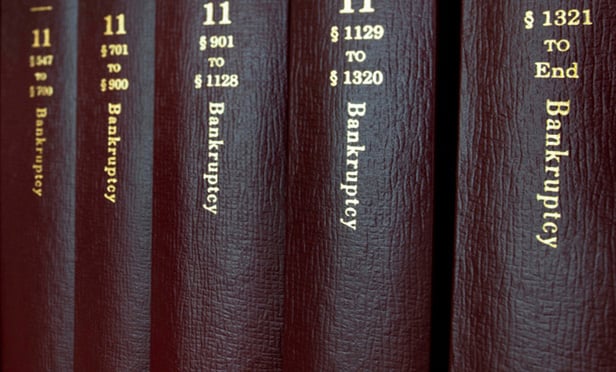Features

LJN Quarterly Update: 2024 Q2
The LJN Quarterly Update highlights some of the articles from the nine LJN Newsletters titles over the quarter. Articles include in-depth analysis and insights from lawyers and other practice area experts.
Features

Sui Generis: Collaborate Like You Mean It
Part Three of a Series This article offers up some thoughts about how lawyers ought to access and manage resources in order to provide a multi-faceted, full-service approach to addressing their clients' needs.
Features

Sui Generis: Negotiate Like You Mean It
As further follow-up regarding tracking of the lifecycle of a commercial lease, Part Two of this series addresses various negotiation events, strategies, desired outcomes and potentially low key disasters.
Features

In-House Counsel Perspective on Negotiating Social Media Influencer Contracts
With the FTC amping up its scrutiny in the social media influencer space, in-house counsel has an opportunity to mitigate risk and help their companies get more bang for their influencer marketing buck.
Features

Grappling With Post-Term Commissions In Personal Management Contracts
A recent judicial decision in a dispute between a management company and r&b artist KEM involved in part whether discussions about extending the term of years between the parties and increasing the manager's commission were binding, even though post-term commissions weren't discussed.
Features

Bankruptcy Court Rules Contract to Produce Documentary Was Not a Personal Services Contract
Bankruptcy courts continue to adjudicate disputes regarding Section 365 of the Bankruptcy Code, which addresses the disposition of executory contracts between the debtor and third parties. And we continue to report on developments in this area. Often the issue involves whether the contract is an executory contract that is subject to being assumed and assigned.
Features

Force Majeure Clauses Are Taking Center Stage In Uncertain Times
Force majeure is lurking in the shadows of the Hollywood strikes, offering struggling studios a potential lifeline out of debt. But the best attorneys and the strongest contracts are proactive, rather than reactive. Thus, consider the following drafting tips to strengthen your force majeure language now, in the calm before the next storm.
Features

It's a Tenant's Market: How to Negotiate and Navigate the Leasing Process
A hybrid workforce has meant that office and retail space is in plentiful supply. These high vacancy rates have caused landlord defaults to be on the rise, making it a tenant-friendly environment for leasing space and obtaining tenant-favorable lease terms. Here is a step-by-step tutorial on how to negotiate the best lease terms and navigate the leasing process while saving money on rent, tenant buildout and operating expenses.
Features

Termination Notices and Copyright Act Claims Accruals
Termination is not automatic. It may be effected only through affirmative action on the part of the author or his or her statutory successors, who must serve an advance notice, signed by or on behalf of all of those entitled to terminate the grant, on the current copyright owner within specified time limits and under specified conditions.
Features

Notice of Pendency In Commercial Real Estate Transactions
Parties to real estate transactions may be tempted to conclude that a notice of pendency will be available in most instances to protect their rights if things go awry. But while the CPLR's description of actions in which a notice of pendency is permitted sounds both clear-cut and extremely broad, in practice it is neither of those things.
Need Help?
- Prefer an IP authenticated environment? Request a transition or call 800-756-8993.
- Need other assistance? email Customer Service or call 1-877-256-2472.
MOST POPULAR STORIES
- Use of Deferred Prosecution Agreements In White Collar InvestigationsThis article discusses the practical and policy reasons for the use of DPAs and NPAs in white-collar criminal investigations, and considers the NDAA's new reporting provision and its relationship with other efforts to enhance transparency in DOJ decision-making.Read More ›
- The DOJ's Corporate Enforcement Policy: One Year LaterThe DOJ's Criminal Division issued three declinations since the issuance of the revised CEP a year ago. Review of these cases gives insight into DOJ's implementation of the new policy in practice.Read More ›
- The DOJ's New Parameters for Evaluating Corporate Compliance ProgramsThe parameters set forth in the DOJ's memorandum have implications not only for the government's evaluation of compliance programs in the context of criminal charging decisions, but also for how defense counsel structure their conference-room advocacy seeking declinations or lesser sanctions in both criminal and civil investigations.Read More ›
- Don't Sleep On Prohibitions on the Assignability of LeasesAttorneys advising commercial tenants on commercial lease documents should not sleep on prohibitions or other limitations on their client's rights to assign or transfer their interests in the leasehold estate. Assignment and transfer provisions are just as important as the base rent or any default clauses, especially in the era where tenants are searching for increased flexibility to maneuver in the hybrid working environment where the future of in-person use of real estate remains unclear.Read More ›
- Developments in Distressed LendingRecently, in two separate cases, secured lenders have received, as part of their adequate protection package, the right to obtain principal paydowns during a bankruptcy case.Read More ›
